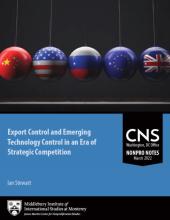From 2011 to 2018, the Hainan State Security Department (HSSD) recruited hackers and linguists in China to create malware used to hack into companies from 12 different countries and across multiple industries. Those identified from the HSSD that led the group are Ding Xiaoyang, Cheng Qingmin, and Zhu Yunmin.
China
Cheng Bo, a.k.a. Joe Cheng, a US-based former employee of Avnet Asia Pte. Ltd., a Singapore-based company specializing in electronic components and software, allegedly falsified documents in order to ship export-controlled power amplifiers to the PRC, and previously Iran.
Dr. Qing Wang, a researcher at the Cleveland Clinic Foundation, allegedly used more than 3.6 million dollars in grant funding from the National Institute of Health to conduct research. The case alleges that while employed at the Cleveland Clinic Foundation, he was also the Dean of the College of Life Sciences and Technology at the Huazhong University of Science and Technology in China.
Song Guo Zheng, a professor of rheumatology at The Ohio State University, used around 1.4 million in grant funding from the National Institute of Health to perform research he intended to take with him to China. He was interdicted and arrested on a flight May 22, 2020 in Alaska while it was on a layover before it was intended to travel to China.
A professor at Texas A&M University, Zhengdong Cheng, was leading a team of students to perform research for NASA. This government funded grant research had a stipulation that prohibited any collaboration with Chinese universities or Chinese owned companies. Cheng, however, failed to disclose his prior association with Guangdong University of Technology in China and his association with the PRC’s Thousand Talents Plan.
The PRC has many instances of economic espionage but very rarely are they linked directly to government organizations as explicitly as in 2018. In this instance, hackers and insiders were alleged to be working for the Jiangsu Province Ministry of State Security (JSSD). This branch of the Chinese Ministry of State Security represents the Jiangsu Province, the capital of which is Nanjing.
Chinese national, Hao Zhang, was convicted of economic espionage and theft of trade secrets for his operations involving American companies Avago and Skyworks. From 2010 to 2015 he coordinated with co-conspirators from Tianjin University in China to take the IP from Avago and Skyworks and recreate the optoelectronics equipment for his own company domestically in China.
The semiconductor market is quite competitive and any advancement in technology could set you ahead of peers. This incentive drove employees from United Microelectronics Corporation, Inc. (UMC), a Taiwanese foundry company, to steal trade secrets from the American company Micron Technology, Inc. (Micron). In 2018, the FBI linked the representatives at UMC to the PRC’s state-owned semiconductor firm Fujian Jinhua.
